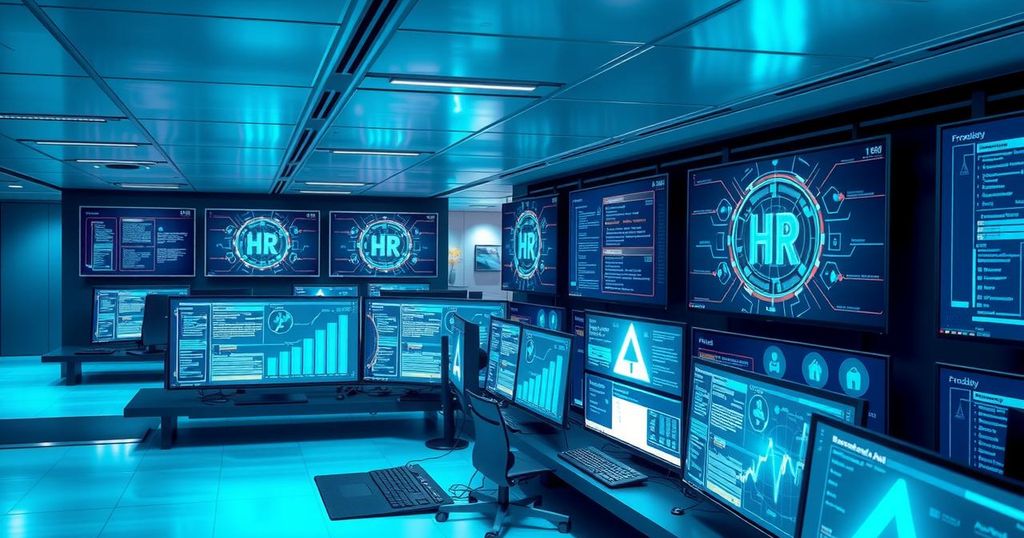The Intersection of Artificial Intelligence and Employment Law
The rise of AI in workforce decisions poses significant legal challenges under anti-discrimination laws. Automated HR tools can inadvertently introduce biases, leading to liability claims. Employers must ensure compliance through auditing and robust policy frameworks to mitigate these risks, particularly as laws around AI use continue to evolve.
In the ever-changing landscape of employment law, the intersection with artificial intelligence (AI) is raising some serious concerns. Automated decision-making technologies, while often seen as efficient, risk potential legal backlash under anti-discrimination laws like Title VII, the ADEA, and the ADA. Algorithms can harbor biases that, when unchecked, may lead to discrimination claims against employers. That’s a big deal, considering how a single flawed algorithm could affect thousands of job candidates, compounding risks compared to decisions made by human hiring managers.
Automated HR tools encompass a wide range of software systems. From applicant tracking systems that score resumes to AI-powered interview platforms evaluating candidates’ responses through video, these tools are making waves. On the one hand, they streamline processes; on the other, they operate on a level of complexity that raises eyebrows. Generative AI systems, for example, learn from data, adapting without the constraints of set rules, which can make their decision-making even trickier to analyze and justify.
The legal frameworks governing these technologies are quite vast. Under Title VII, an employer could incur liability simply due to the adverse effects of facially neutral AI practices on a protected class. Even a well-meaning AI system that results in discriminatory outcomes could spell trouble. Moreover, protections under the ADA ensure that individuals with disabilities shouldn’t be unfairly screened out by AI systems, meaning employers need to pay close attention to accessibility and accommodations in their algorithms.
The Age Discrimination in Employment Act (ADEA) also comes into play for employers using AI when hiring individuals over 40, safeguarding against age-related bias. Furthermore, AI’s role in compensation calculations risks perpetuating existing pay disparities, which could put employers in violation of the Equal Pay Act. Also, the EU is stepping into the game with their AI Act, laying down a framework that could influence how AI is used in the workplace across the Atlantic.
Then you’ve got state and local regulations—many areas are ahead of the curve with laws addressing AI uses, including bias audits and disclosure requirements. Not to forget, data privacy laws keep popping up as an additional hurdle for employers to navigate. With no federal AI regulations yet in place, it’s a bit of a minefield.
One considerable challenge is algorithmic transparency. Unlike a human hiring manager who can articulate their thought processes, algorithms, especially generative AI, are often considered “black boxes.” This lack of clarity makes defending against claims of discrimination frustratingly complex for employers. When decisions, changing with each data ingestion, can’t be explained, what’s a company supposed to say when the chips are down?
To help manage these risks, proactive strategies are vital. Establishing robust policies around AI use, including transparency and non-discrimination, is paramount. Employers should conduct thorough due diligence before employing any AI tool, ensuring the tool aligns with their ethical standards. HR personnel need proper training on AI’s role in their processes, and human oversight is essential.
Regular audits of these AI systems can make a significant difference in catching potential discriminatory impacts before they escalate into legal issues. Employers might want to carry out audits on a routine basis, viewing it as a long-term investment to safeguard their practices against evolving laws and potential biases. This is not just about compliance; it’s about creating a fair hiring landscape.
As employers tread this tricky path, Ogletree Deakins’ Technology Practice Group is on the lookout for changes and developments in AI and employment law. They promise updates on their blogs about this rapidly evolving realm where technology meets labor rights. Keeping informed could be key to staying ahead in the game, particularly as regulations shift and our understanding of AI deepens.
The convergence of artificial intelligence and employment law is fraught with complexities that employers can’t afford to overlook. With mounting legal risks tied to AI-driven decisions, they must adopt proactive measures, including rigorous auditing and a strong policy framework. As technological advancements and regulations evolve, staying informed and adaptable will be crucial for employers aiming to mitigate discrimination risks and comply with existing laws.
Original Source: ogletree.com




Post Comment